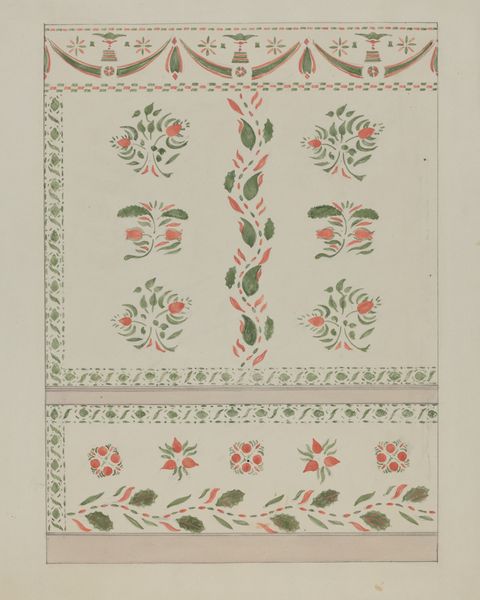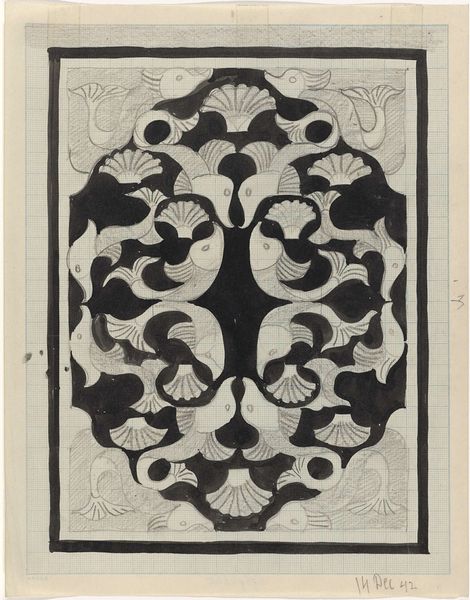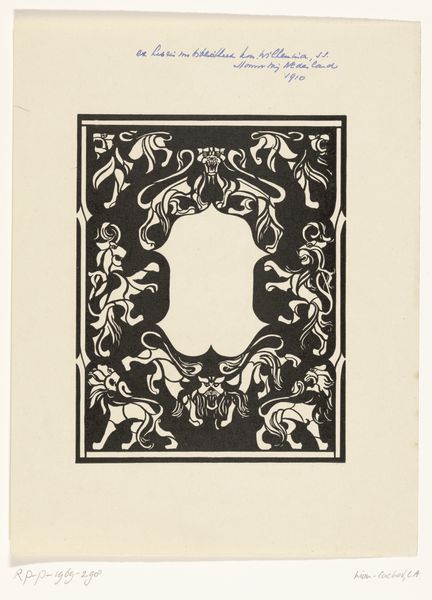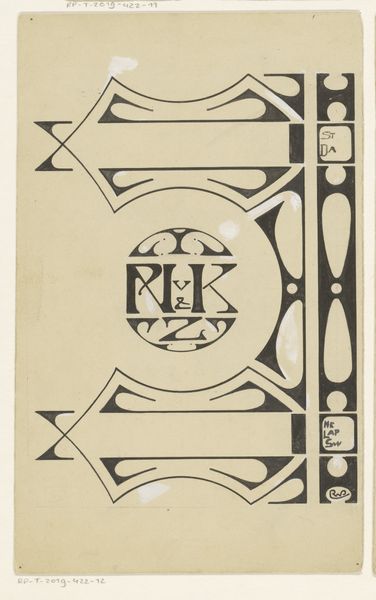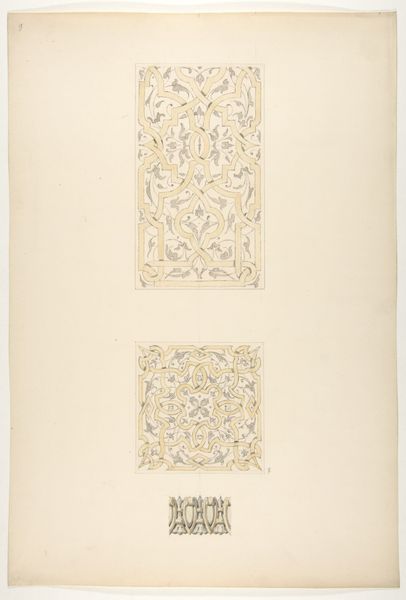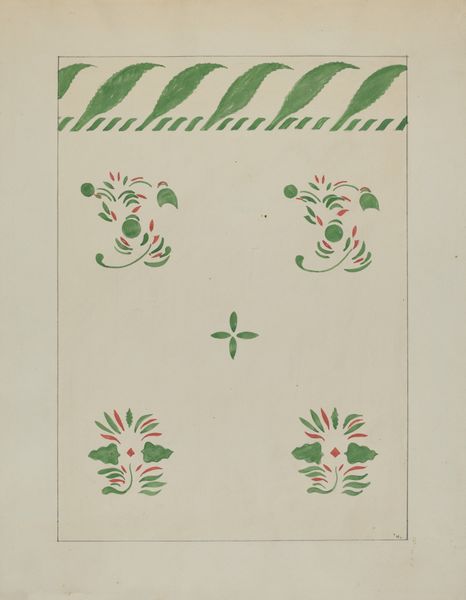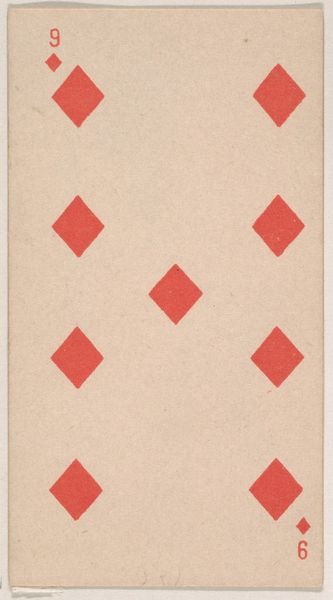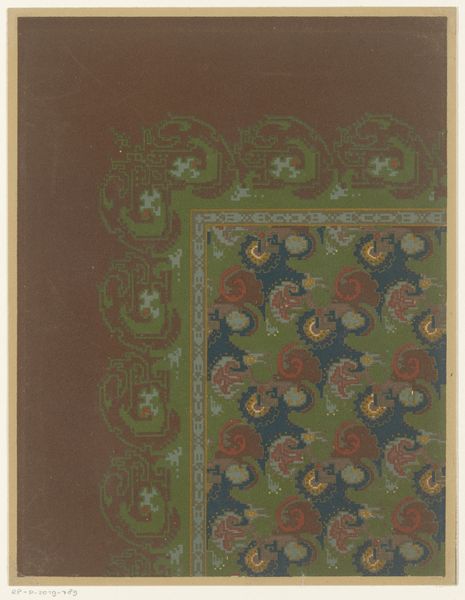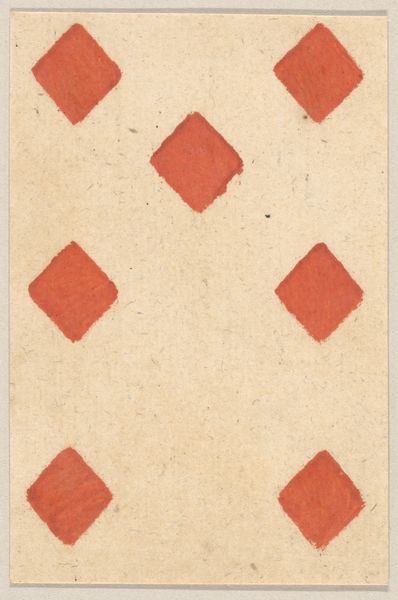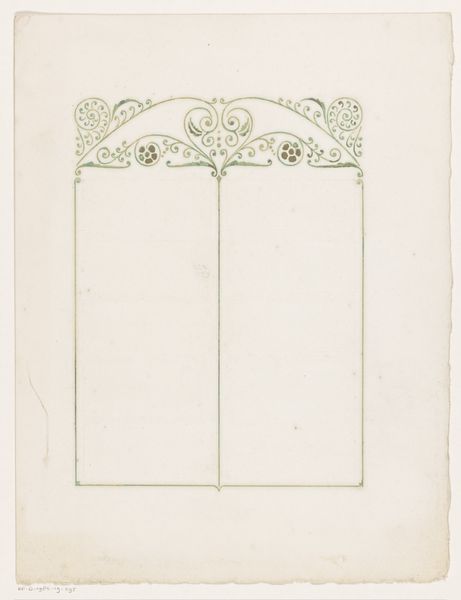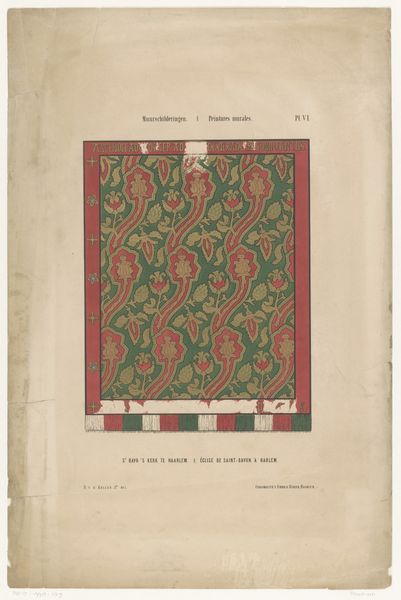
drawing, stencil, watercolor
#
drawing
#
stencil
#
form
#
watercolor
#
geometric
#
line
#
decorative-art
#
watercolor
Dimensions: overall: 35.7 x 27.7 cm (14 1/16 x 10 7/8 in.)
Copyright: National Gallery of Art: CC0 1.0
Curator: This work is called "Stencilled Wall Decoration," and it’s believed to date from around 1936. It employs watercolor and stencil techniques. Editor: My first impression is one of simplicity, almost spartan, but there's a deliberate craft at work in these repeating green patterns. It feels...restrained. Curator: Right, the work likely existed as part of a broader movement within decorative arts advocating for affordable and accessible design. We often see such initiatives gaining momentum during the interwar period, fueled by social concerns for improving domestic environments for the working class. Editor: Which is intriguing considering it uses watercolor, typically a fine art medium, to achieve what's essentially a mass-producible motif through stenciling. Do you see any specific influences or sources in this kind of aesthetic approach? Curator: One can find similar design concepts stemming from the Arts and Crafts movement, translated to new aesthetics such as Art Deco streamlining that style’s floral elements into cleaner geometries. Editor: Absolutely, the simplified forms make this versatile. This wasn't intended to be an isolated drawing, but a plan, a pre-cursor to something. Looking closely at the way the green pigment has been applied, it’s interesting. There's subtle unevenness which adds a hand-touched quality. Was that a consideration I wonder? Curator: Yes, the value that was assigned to works such as these shifted over time. What once stood for accessibility later took on new meanings linked to the revival of certain "honest" aesthetics and artistic integrity tied to handcraft. Editor: It reminds me that every designed space relies on unseen labor. Considering the era, do we know much about who was doing that decorating labor? Curator: Unfortunately, information regarding such practitioners is often not well documented; most sources prioritize those leading firms or teaching in design schools over independent decorators or homemakers utilizing stencils within their own environments. Editor: So it hints at larger industries while eliding the lives of individuals involved. Overall I get a sense of this work standing as both a product of and a prompt to production itself. Curator: It's definitely a reflection of its time—a moment of shifting aesthetic and social priorities expressed through design. Editor: It’s been useful thinking through how production shifts across categories of fine art, design and domestic life and labor.
Comments
No comments
Be the first to comment and join the conversation on the ultimate creative platform.
